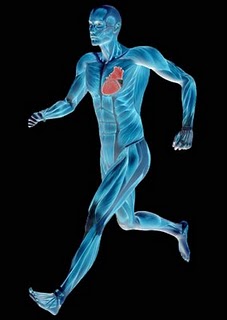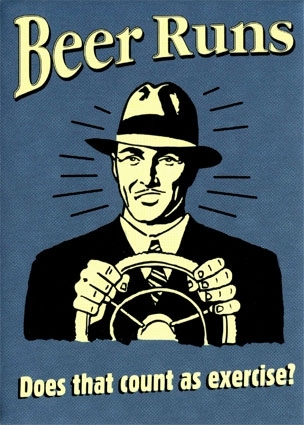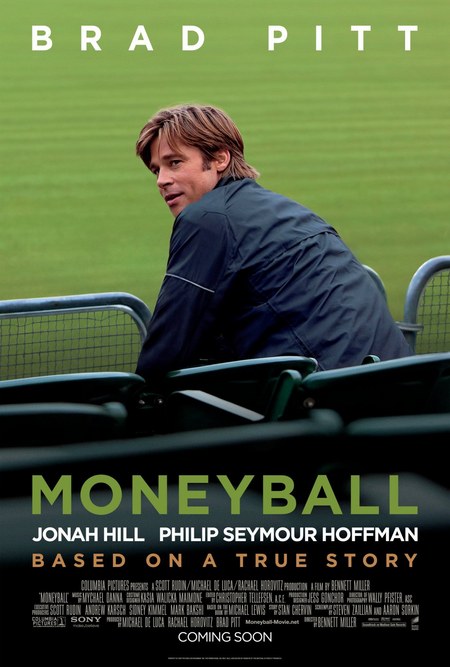 If there is a poster child sport for our favorite phrase, "Sports Are 80 Percent Mental", it must be golf. Maybe its the slow pace of play that gives us plenty of time to think between shots. Maybe its the "on stage" performance feeling we get when we step up to that first tee in front of our friends (or strangers!) Maybe its the "high" of an amazing approach shot that lands 3 feet from the cup followed by the "low" of missing the birdie putt. From any angle, a golf course is the sport psychologist's laboratory to study the mix of emotions, confidence, skill execution and internal cognitive processes that are needed to avoid buying rounds at the 19th hole. In Putt With Your Brain - Part 1, we looked at some of the recent research on putting mechanics but, as promised, we now turn to the mental side of putting. Sian Beilock and her team at the University of Chicago's Human Performance Lab recently released the latest of a string of research studies on sports performance, or more specifically, how not to choke under pressure. Lucky for us, they chose putting as their sport skill of choice. This ties in with Dr. Beilock's theory of embodied cognition that we featured in Watching Sports Is Good For Your Brain.
If there is a poster child sport for our favorite phrase, "Sports Are 80 Percent Mental", it must be golf. Maybe its the slow pace of play that gives us plenty of time to think between shots. Maybe its the "on stage" performance feeling we get when we step up to that first tee in front of our friends (or strangers!) Maybe its the "high" of an amazing approach shot that lands 3 feet from the cup followed by the "low" of missing the birdie putt. From any angle, a golf course is the sport psychologist's laboratory to study the mix of emotions, confidence, skill execution and internal cognitive processes that are needed to avoid buying rounds at the 19th hole. In Putt With Your Brain - Part 1, we looked at some of the recent research on putting mechanics but, as promised, we now turn to the mental side of putting. Sian Beilock and her team at the University of Chicago's Human Performance Lab recently released the latest of a string of research studies on sports performance, or more specifically, how not to choke under pressure. Lucky for us, they chose putting as their sport skill of choice. This ties in with Dr. Beilock's theory of embodied cognition that we featured in Watching Sports Is Good For Your Brain.
An underlying theme to this work is the concept of automaticity, or the ability to carry out sport skills without consciously thinking about them. Performing below expectations (i.e. choking) starts when we allow our minds to step out of this automatic mode and start thinking about the steps to our putting stroke and all of those "swing thoughts" that come with it ("keep your elbows in", "head down", "straight back"). Our brain over analyzes and second-guesses the motor skills we have learned from hundreds of practice putts.
 If there is a poster child sport for our favorite phrase, "Sports Are 80 Percent Mental", it must be golf. Maybe its the slow pace of play that gives us plenty of time to think between shots. Maybe its the "on stage" performance feeling we get when we step up to that first tee in front of our friends (or strangers!) Maybe its the "high" of an amazing approach shot that lands 3 feet from the cup followed by the "low" of missing the birdie putt. From any angle, a golf course is the sport psychologist's laboratory to study the mix of emotions, confidence, skill execution and internal cognitive processes that are needed to avoid buying rounds at the 19th hole. In Putt With Your Brain - Part 1, we looked at some of the recent research on putting mechanics but, as promised, we now turn to the mental side of putting. Sian Beilock and her team at the University of Chicago's Human Performance Lab recently released the latest of a string of research studies on sports performance, or more specifically, how not to choke under pressure. Lucky for us, they chose putting as their sport skill of choice. This ties in with Dr. Beilock's theory of embodied cognition that we featured in Watching Sports Is Good For Your Brain.
If there is a poster child sport for our favorite phrase, "Sports Are 80 Percent Mental", it must be golf. Maybe its the slow pace of play that gives us plenty of time to think between shots. Maybe its the "on stage" performance feeling we get when we step up to that first tee in front of our friends (or strangers!) Maybe its the "high" of an amazing approach shot that lands 3 feet from the cup followed by the "low" of missing the birdie putt. From any angle, a golf course is the sport psychologist's laboratory to study the mix of emotions, confidence, skill execution and internal cognitive processes that are needed to avoid buying rounds at the 19th hole. In Putt With Your Brain - Part 1, we looked at some of the recent research on putting mechanics but, as promised, we now turn to the mental side of putting. Sian Beilock and her team at the University of Chicago's Human Performance Lab recently released the latest of a string of research studies on sports performance, or more specifically, how not to choke under pressure. Lucky for us, they chose putting as their sport skill of choice. This ties in with Dr. Beilock's theory of embodied cognition that we featured in Watching Sports Is Good For Your Brain.
An underlying theme to this work is the concept of automaticity, or the ability to carry out sport skills without consciously thinking about them. Performing below expectations (i.e. choking) starts when we allow our minds to step out of this automatic mode and start thinking about the steps to our putting stroke and all of those "swing thoughts" that come with it ("keep your elbows in", "head down", "straight back"). Our brain over analyzes and second-guesses the motor skills we have learned from hundreds of practice putts.
 Your Pre-Exercise Heart Rate May Signal A Sudden Cardiac Attack
Your Pre-Exercise Heart Rate May Signal A Sudden Cardiac Attack Research Shows Beer Runs Are Good For You
Research Shows Beer Runs Are Good For You Moneyball Goes To Hollywood And Beyond
Moneyball Goes To Hollywood And Beyond Ohio State And Miami Football Scandals Highlight Coaching Research
Ohio State And Miami Football Scandals Highlight Coaching Research



















